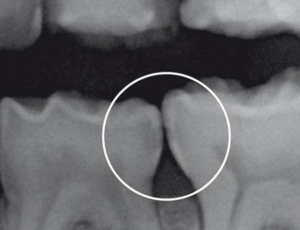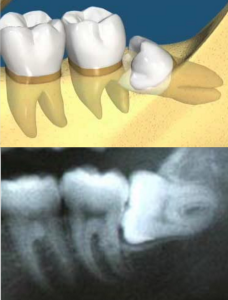Dental X-rays in Children
Smile for the camera: A look at dental x-rays (radiographs) in children
If you spend some time in our office you may hear us talking to our patients about “taking pictures” of their teeth. What we’re referring to are dental radiographs. These are images we take in order to help better evaluate the health and development of teeth and surrounding oral structures. Many parents have questions about dental radiographs or “x-rays” and why they are a part of the oral evaluation.
Why do you need radiographs; can’t you just look inside the mouth?

This is a question we often receive from parents. The reason we need radiographs is that although we can visually inspect a large majority of the tooth structure, there are some areas that are impossible to evaluate visually. Areas, where adjacent teeth contact each other (known as the “interproximal” areas), cannot be seen by looking into the mouth and thus must be evaluated with radiographs. There is no reliable way to diagnose decay interproximally without these radiographic images. Similarly, there are structures that lay beneath gum tissue that can only be seen radiographically. Examples of these structures include tooth roots, unerupted teeth, and bone. Dental radiographs help us identify, among other things, teeth that may be congenitally missing, extra teeth, teeth that are erupting incorrectly, or oral pathology in the bone.
When do you need to take radiographs?
The answer to this question will be different for every patient. Factors that determine if and when a radiograph needs to be taken can include a risk of decay, history of trauma, anatomic abnormalities, infection, and dental development. If a patient has a higher risk of decay then radiographs may need to be taken at a higher frequency when compared to a patient with lower risk.
The orthodontist just took a radiograph, do you still need to take one?

Many of our patients are undergoing orthodontic treatment and so we are asked this question quite often. In some cases, the radiograph taken by the orthodontist is all that we will need if we are looking at dental development. In these cases, we have the orthodontist send us a copy of the radiograph so that we can evaluate it. Unfortunately, the radiographs we get from the Orthodontist are not good at giving us diagnostic information regarding cavities between the teeth. Because of this, we will often still need to take different radiographs as part of an evaluation of decay.
Are radiographs safe?
Here at Frisco Kid’s Dentistry, we take your child’s safety very seriously. Because of this, we do everything we can to minimize the exposure to radiation when taking radiographs. We use the latest in digital sensor technology, which is more sensitive than conventional film sensors. This allows us to use lower levels of radiation. But how much radiation is it? To put things into perspective let’s look at the amount of background radiation we experience in everyday life and compare it to what we are exposed to when getting a dental radiograph. Millirems (mrem) are units used to express radiation exposure. The first clinical signs of injury caused by radiation are seen at around 100,000 mrem. The amount of exposure we get from 1 round-trip flight from New York to California is 5 mrem. The yearly exposure from sunlight and cosmic radiation is 35 mrem. Even naturally occurring radioactive elements in the air we breathe leads to 230 mrem of yearly exposure. So how much exposure does a single digital dental radiograph produce? The answer is just 0.15 mrem. As we can see, there is some exposure to dental radiographs but it is significantly less than what we are exposed to naturally. And we further decrease the amount of exposure by only taking radiographs when we need them and using protective gear like lead aprons and thyroid collars. In this way, we are able to obtain valuable diagnostic information to help us treat your child while minimizing exposure.
Frisco Kid’s Dentistry follows the radiographic guidelines outlined by the American Academy of Pediatric Dentistry. If you have any additional questions regarding dental radiographs please don’t hesitate to contact our office by Online Appointment Request or call 214 618 5200.
